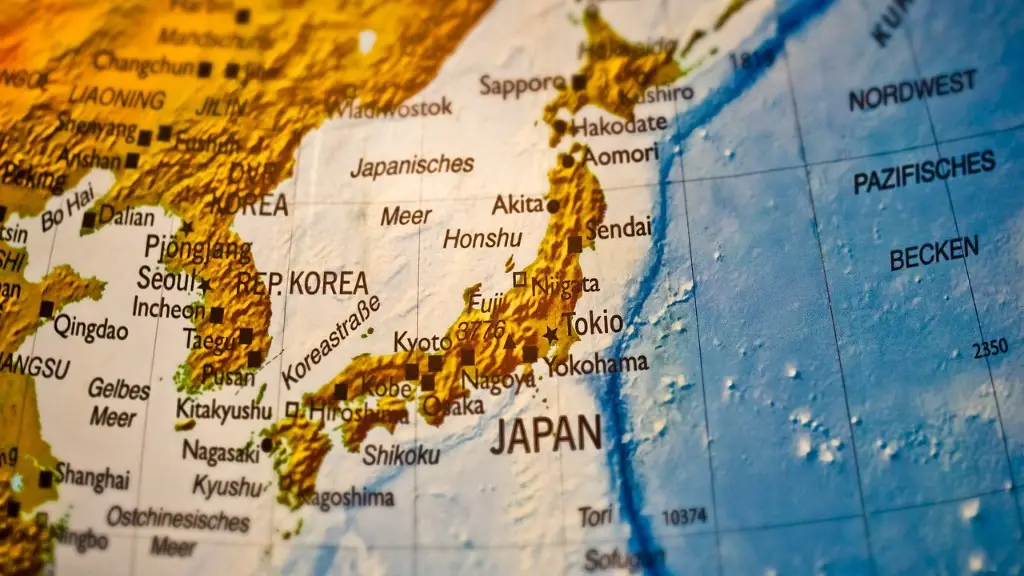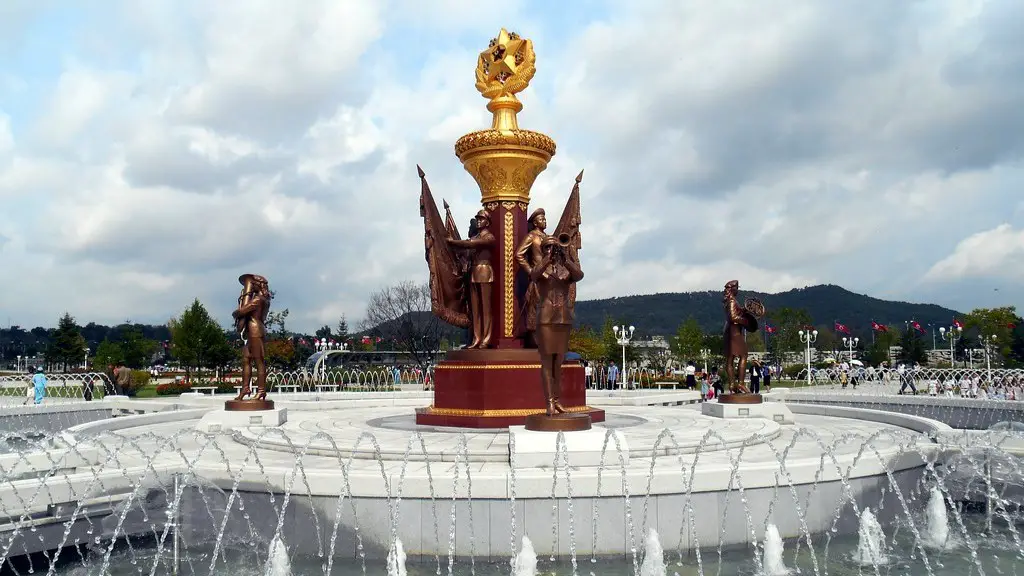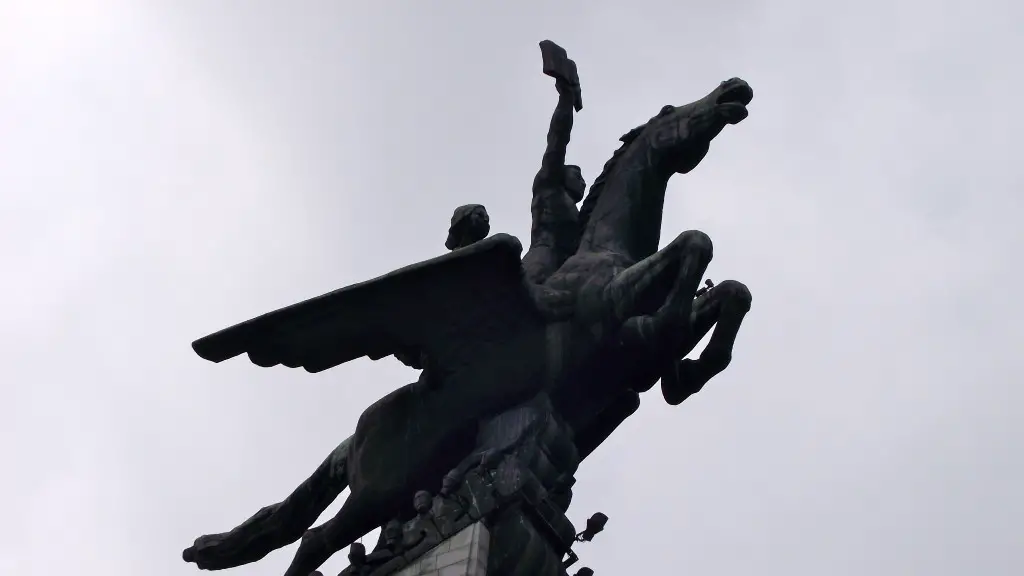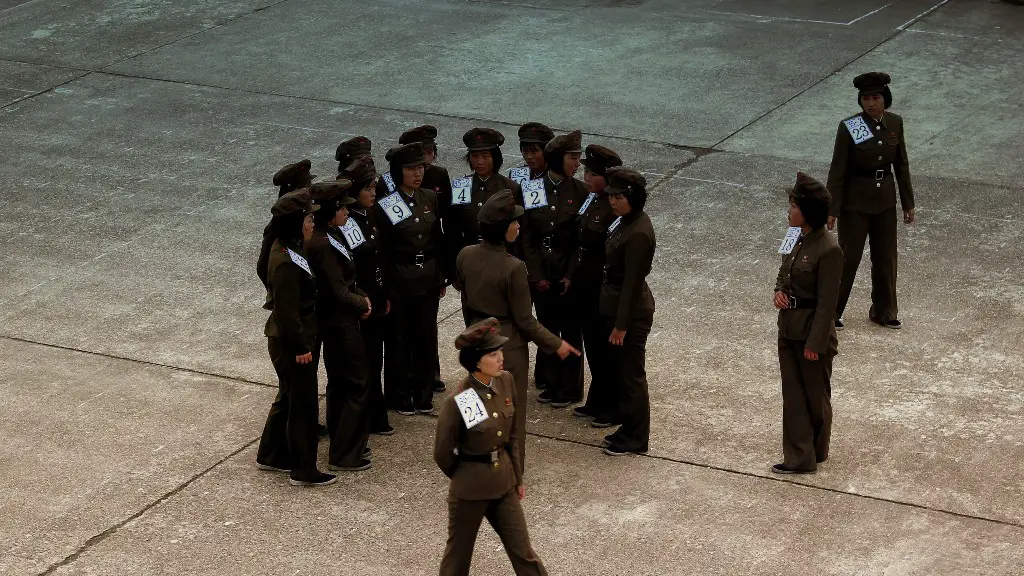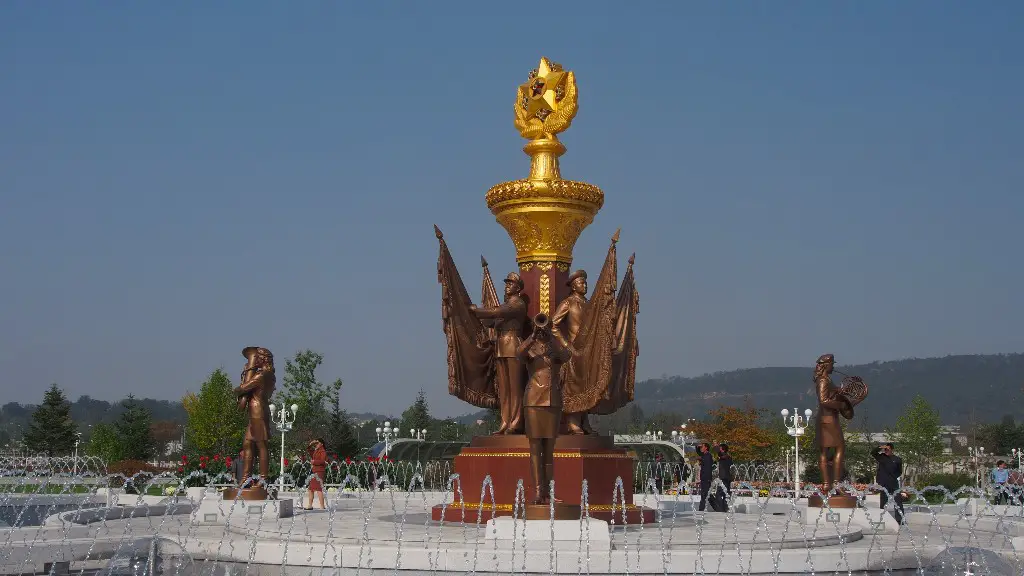Since the end of World War II in 1945, Korea had been divided into two sovereign states: North Korea and South Korea. The separation of the two countries was a direct result of the Cold War between the Soviet Union and the United States. The two superpowers were unable to agree on a single government for the entire Korean Peninsula, and as a result, each established their own government in their respective halves of the peninsula. This division led to the Korean War in 1950, which ended in a stalemate and an official ceasefire in 1953.
The Korean War led to the separation of North and South Korea.
Why was North Korea and South Korea divided?
It is reasonable to conclude that the primary reason for the division of Korea was to halt the Soviet advance south of the 38th parallel. US policy during World War II was focused on preventing any one power from dominating the Korean peninsula, so the division of the country was likely meant to achieve that goal. However, other factors such as the desire to maintain stability in the region and to avoid a potential conflict between the US and the Soviet Union may have also played a role.
There are a few key takeaways from the different paths that South and North Korea took following the end of the Korean War in 1953. Firstly, the 38th parallel marks the so-called demilitarized zone that straddles the border of the two countries. Secondly, South Korea took a much more social, economic, and political path than North Korea. This is likely due to the different ideologies of the two countries, with South Korea being more capitalist and North Korea being more communist. Finally, the paths taken by the two Koreas have led to very different outcomes, with South Korea being much more prosperous and stable than North Korea.
What separates the North and South Korea
The Demilitarized Zone (DMZ) is a region on the Korean peninsula that demarcates North Korea from South Korea. It roughly follows latitude 38° N (the 38th parallel), the original demarcation line between North Korea and South Korea at the end of World War II. The DMZ is a 4-kilometre-wide (2.5 mi) buffer zone between the two Koreas, running along the entire length of the38th parallel.
North Koreans are able to travel abroad with permission from their government, as is the case with other Soviet, socialist, or Eastern Bloc countries. This permission is necessary in order to ensure that North Koreans are able to return to their home country.
What is the problem between North Korea and South Korea?
The conflict between North and South Korea is largely due to the two governments contending to be the only legitimate government in the Korean peninsula. Both sides believe that they have a right to rule the entire peninsula, which has led to a continuous state of war between the two countries. There have been multiple attempts at peace over the years, but the conflict always resurfaces eventually.
North Korea is a country that does not allow its citizens much freedom of movement. North Koreans are not able to freely travel around their own country, let alone travel abroad. Emigration and immigration are strictly controlled by the government. This lack of freedom of movement is a major human rights violation.
Who is stronger South Korea or North Korea?
North Korea has an advantage over South Korea in terms of numbers of ground troops and equipment. North Korea’s ground forces are highly mobile and very well equipped. Additionally, North Korea’s guns have a longer range and are more powerful than those of South Korea. This gives North Korea an advantage in any potential conflict.
Goryeo was a Korean kingdom founded in 918. It lasted until 1392. The kingdom was located in the northern and central parts of the Korean Peninsula. Goryeo’s founded coincided with the collapse of the unified Silla Dynasty, of which it was a part. Goryeo is the source of the English name “Korea.”
Goryeo’s rulers saw themselves as rulers of all of Korea, though their strength and control declined after the Late Goryeo period. In the 14th century, the kingdom’s power also greatly weakened due to domestic strife, leading to the fall of the Goryeo Dynasty in 1392 and its subsequent annexation by the Joseon Dynasty.
How did Korea gain independence from Japan
The Korean Independence League (KIL) was established in January 1915 by Suh Sang Il. The purpose of the KIL was to promote and achieve Korean independence from the government of Japan. On March 1, 1919, Korean nationalists formally declared Korea’s independence from Japan. However, their efforts were ultimately unsuccessful and Korea remained under Japanese rule until 1945.
The US supported the Republic of Korea (commonly called South Korea), in repelling an invasion from the Democratic People’s Republic of Korea (commonly called North Korea) The Korean War was a conflict that emerged after World War II The Empire of Japan had occupied the Korean Peninsula during the war.
Why did Japan take over Korea?
Japan began to view Korea as a potential threat to its security after the signing of the Treaty of Kanagawa in 1854. The treaty opened up Japan to the outside world and led to a rapid modernization of the country. Japan became increasingly worried that Korea would be colonized by one of the Western powers. In 1876, Japan signed a treaty with Korea that gave it the right to station troops in the country. In 1879, Japan annexed Korea.
The annexation of Korea was part of Japan’s imperialist goals. Japan wanted to create a sphere of influence in East Asia and to be recognized as a great power. By annexing Korea, Japan was able to increase its influence in the region and to better protect its own interests.
The United States government advises against all travel to North Korea due to the serious risk of arrest and long-term detention of U.S. nationals. The North Korean government continues to detain U.S. citizens without charge or trial, and North Korea does not recognize the protective status of diplomats. foreigners may be subject to arbitrary arrest and detention. If you choose to travel to North Korea, exercise increased caution and stay alert to your surroundings.
Why is North Korea dark at night
Since the mid-1990s, when fuel stopped flowing from the defunct Soviet Union to North Korea, the famously hermetic country has descended into darkness. North Koreans have been literally left in the dark, with no electricity to power lights or appliances. The lack of electric power has crippled the country’s economy and isolated its people even further from the rest of the world.
The new measures taken by the United States now go a step further by restricting travel to North Korea by Americans altogether. This is likely in response to the recent detainment of an American student in North Korea, as well as the continued development of the country’s nuclear program. The move will likely further escalate tensions between the two countries.
Why South Korea and North Korea are enemies?
The armistice agreement that ended the Korean War in 1953 did not include a peace treaty, which means that technically, the two countries are still at war. North Korea is a one-party totalitarian state that is run by the Kim dynasty. Because of this, the two countries have very different ideologies, which has led to them becoming opposite nations.
The DMZ is a result of the division of Korea at the end of the Korean War in 1953. It runs along the 38th parallel north and is surrounded by a barbed wire fence.
There are a few designated points where civilians are allowed to cross the DMZ, but for the most part, it is closed to the public.
Are North and South Korea still at war with each other
The Korean War was a conflict between North and South Korea that began in 1950. However, no peace treaty was ever signed, and the two Koreas are technically still at war. In April 2018, the leaders of North and South Korea met at the DMZ and agreed to work toward a treaty to end the Korean War formally.
The telephone system in North Korea is adequate, with 118 million fixed lines available in 2008. However, most phones are only installed for senior government officials. Someone wanting a phone installed must fill out a form indicating their rank, why they want a phone, and how they will pay for it.
Warp Up
The Korean Peninsula was divided into North and South Korea after the Korean War (1950-1953). During the war, the Soviet Union occupied the northern half of the peninsula, while the United States occupied the southern half. The two superpowers were unable to agree on a single government for the entire peninsula, and so the peninsula was split into two countries.
The two Koreas have been separated since the end of the Korean War in 1953. North Korea has been controlled by the communist government of the Kim dynasty while South Korea has been a democracy. The two governments have been in conflict since the division of the Korean peninsula. South Korea has tried to engage North Korea in dialogue but the North has always been unwilling to participate.Recently, North Korea has been increasing its military activity and has become a nuclear power. This has led to increased tensions between the two Koreas.

